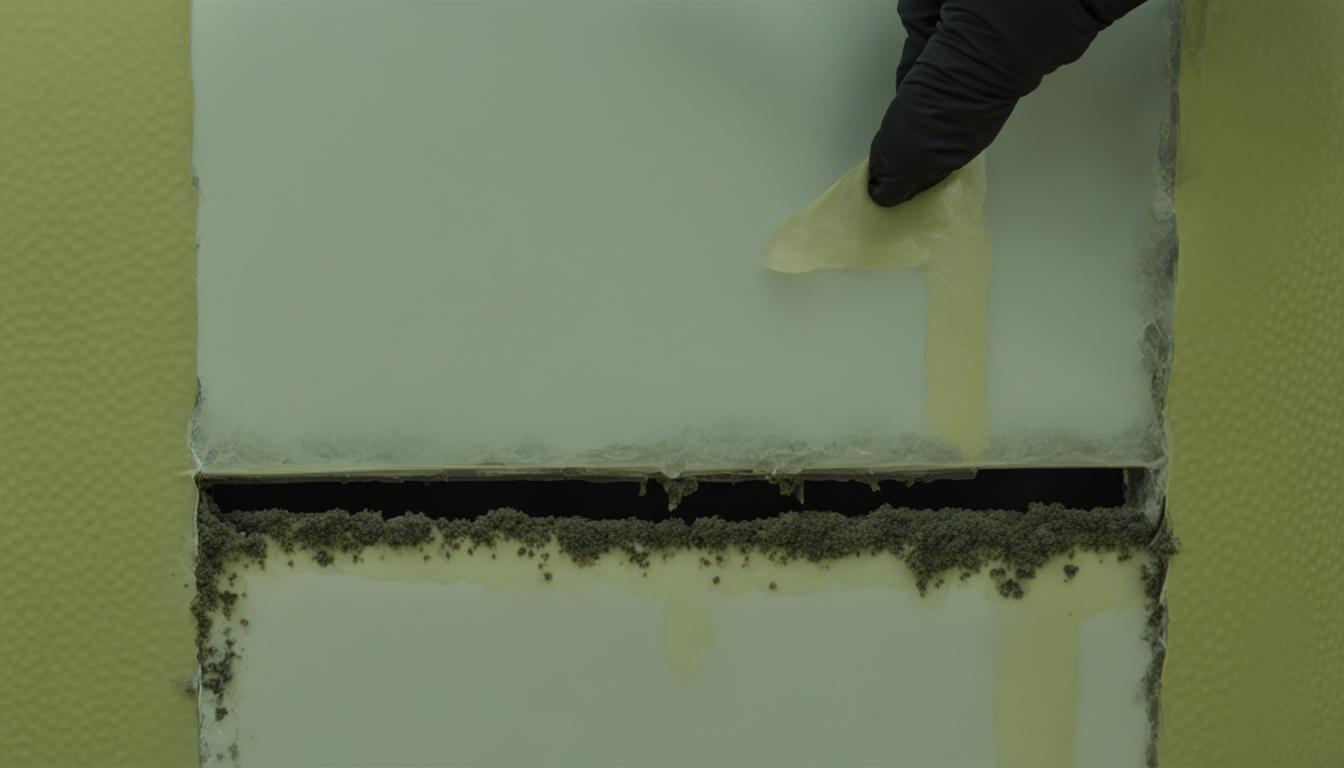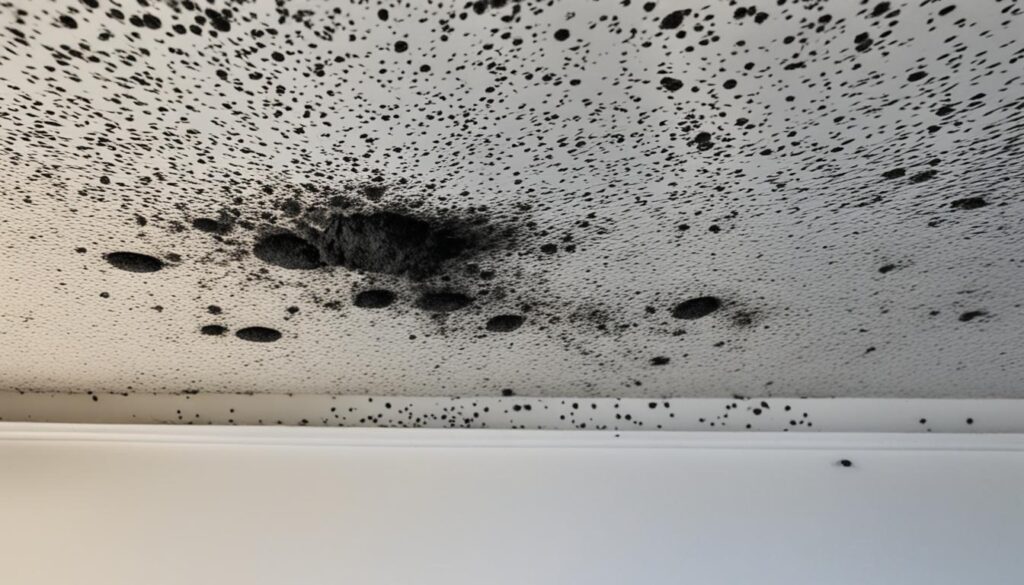
How to Fix Mold on Drywall – Best Remediation Tips
If you’ve discovered mold on your drywall, it’s crucial to take immediate action to prevent further damage and potential health risks. In this section, we will provide you with essential tips on how to effectively fix mold on your drywall, ensuring a safe and mold-free environment in your home.
Before diving into the remediation process, it’s essential to first identify the extent of the problem. Conduct a thorough mold inspection to determine the severity and source of the mold growth. This step is crucial in developing an effective plan for mold removal.
To fix mold on drywall, start by isolating the affected area to prevent the spread of spores. Use plastic sheets and tape to seal off the contaminated space. Make sure to wear proper protective equipment, including gloves, goggles, and a respirator, to avoid exposure to mold spores.
The next step is to remove the mold-infested drywall. Cut out the affected area using a utility knife, ensuring that you remove at least 12 inches beyond the visible mold. Bag the discarded materials immediately in heavy-duty trash bags, sealing them tightly.
Once the affected drywall is removed, clean the surrounding area with a mixture of water and mild detergent or a commercial mold cleaner. Scrub the surfaces thoroughly, ensuring all visible mold is removed. Allow the area to dry completely.
After cleaning, it’s crucial to address the underlying cause of the mold growth. Fix any water leaks, humidity issues, or ventilation problems to prevent future mold outbreaks. Consider installing a dehumidifier or improving airflow in the affected area.
To complete the remediation process, replace the removed drywall with new, mold-resistant material. Consult with a professional to ensure the installation is done correctly and in compliance with building codes.
Remember, when dealing with significant mold infestations or if you’re unsure about handling the remediation process yourself, it’s best to seek the expertise of professional mold removal services. They have the knowledge, experience, and equipment necessary to effectively eradicate mold and prevent its recurrence.
Key Takeaways:
- Identify the extent of the mold problem through a thorough inspection.
- Isolate the affected area and wear protective equipment during the remediation process.
- Remove the mold-infested drywall, ensuring a margin of at least 12 inches beyond the visible mold.
- Clean the surrounding area with a mixture of water and mild detergent or a commercial mold cleaner.
- Address the underlying cause of the mold growth to prevent future outbreaks.
Professional Mold Removal and Prevention Services
When it comes to dealing with mold on drywall, professional services can be a crucial step in ensuring thorough removal and preventing future outbreaks. Here, we will explore the benefits of hiring professionals for professional mold removal, their expertise in dealing with black mold on drywall, and effective mold prevention techniques and treatments specifically tailored for drywall.
The Importance of Professional Mold Removal
Mold growth on drywall can be a serious issue that requires immediate attention. Trying to remove mold on your own can often result in incomplete removal, leading to recurring outbreaks. Professional mold removal services offer the expertise and tools needed to effectively eliminate mold from drywall, ensuring a safe and healthy environment for you and your family.
- Trained mold remediation specialists have extensive knowledge of mold identification, removal techniques, and safety protocols.
- They use advanced equipment and specialized cleaning agents that effectively remove mold without causing further damage to the drywall.
- Professional mold removal services provide a comprehensive approach, including thorough inspections, containment measures, proper disposal of contaminated materials, and post-remediation testing to ensure complete eradication of mold.
Dealing with Black Mold on Drywall
Black mold, also known as Stachybotrys chartarum, is a particularly harmful type of mold that thrives in damp environments. If you suspect black mold on your drywall, it is crucial to seek professional help immediately. Professional mold removal experts have the necessary knowledge and experience to handle black mold safely and effectively.
They will:
- Conduct a thorough inspection to identify the extent of the black mold infestation.
- Implement appropriate containment measures to prevent the spread of mold spores during the removal process.
- Utilize specialized cleaning techniques and EPA-approved products to eradicate black mold from drywall surfaces.
- Recommend necessary repairs or replacements to ensure that the affected drywall is restored to a safe and mold-free condition.
Mold Prevention Techniques for Drywall
Preventing mold growth on drywall is equally important to ensure a long-lasting solution. By taking proactive measures, you can reduce the risk of future mold outbreaks and protect your drywall from damage.
Here are some effective mold prevention techniques for drywall:
- Keep drywall surfaces dry by promptly repairing any leaks or water damage.
- Control indoor humidity levels with the use of dehumidifiers or proper ventilation.
- Ensure proper insulation to prevent condensation and moisture buildup on drywall.
- Regularly inspect and clean drywall surfaces, especially in areas prone to moisture, such as bathrooms and kitchens.
By following these mold prevention techniques and regularly monitoring your drywall for any signs of mold, you can maintain a mold-free environment and protect the structural integrity of your home.
Don’t let mold on drywall compromise the safety and comfort of your living space. Hire professional mold removal experts to ensure comprehensive mold remediation and effective prevention strategies tailored for drywall.

Conclusion
In conclusion, if you discover mold on your drywall, it is crucial to take immediate action to prevent further damage and potential health risks. By following the tips and strategies outlined in this article, you can effectively fix mold on drywall and create a mold-free environment in your home.
Remember, thorough drywall mold removal involves identifying the source of moisture, addressing the underlying issue, and implementing effective remediation techniques. Whether you choose to tackle the mold problem yourself or hire professionals, it’s important to prioritize safety and ensure proper ventilation during the process.
If you’re uncertain about the extent of the mold infestation or need assistance with the remediation process, it’s recommended to schedule a professional mold inspection. Mold inspection experts have the experience and tools to accurately assess the situation and develop a tailored plan for mold remediation.
For reliable mold removal services and expert guidance, consider reaching out to Fix Mold Miami at 305-465-6653. Their experienced team can conduct a comprehensive mold assessment and offer effective solutions to fix mold on drywall, ensuring a healthy living environment for you and your family.




